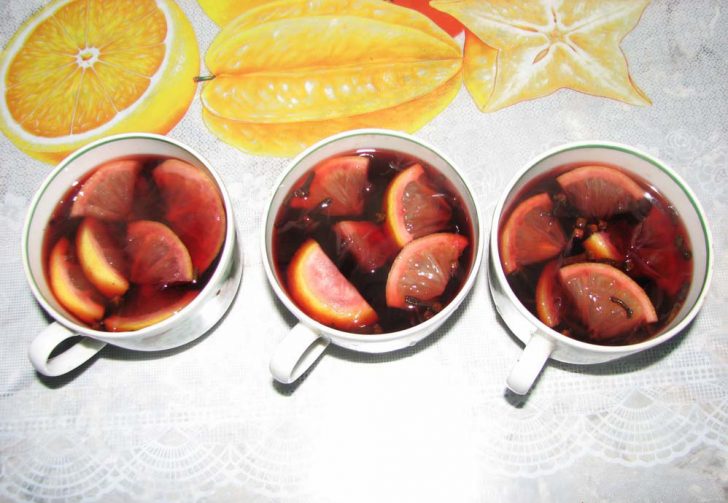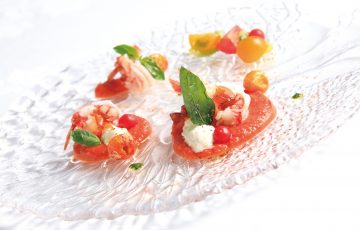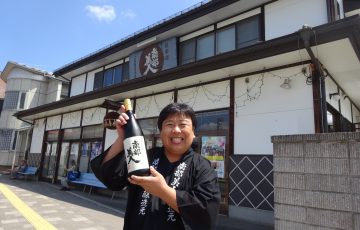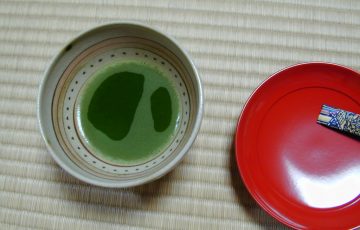Warm up your festive season with our guide to preparing mulled wine
‘Tis the season to be jolly, and there is no better way to celebrate than enjoying a glass of mulled wine (excluding the obvious and more traditional methods of spending time with family, giving/receiving presents and convincing your daughter that Santa /does/ exist).
Mulled wine is a drink with a long history, one that has been tightly linked with Christmas since the 14th century and probably much further back than that. In its most simplified form, mulled wine is a heated wine (mostly, but not exclusively red wine) often flavored with fruits, spices or sugar. There are dozens of different recipes from dozens of different countries, but this article will walk you through some of the most popular and strange techniques, all of which are simple enough for you to try at home. We would also like to invite you to post any festive-photos you may have on our publisher’s Facebook page (you can also check out my disastrous attempts).
None of the recipes will explain the quantities of the ingredients that are needed, as mulled wine is best made to your own taste. The wine you use is also your own decision, although I have chosen four Japanese wines that have very different tastes and price-tags.
The first three wines are all red and lend themselves well to most Mulled wine recipes. The cheapest, Merican Bon Rouge, sells for a mere 590 yen per bottle. Mercian has a long history selling wine in Japan and pride themselves on making affordable, quality drinks. In fact, they were the first Japanese wine to be served to first class passengers on JAL flights. Although it is not the best wine that you will ever drink, it is very cheap and widely available (convenience stores as well as supermarkets should be well stocked with the stuff). It is also a sweet wine, so it is a perfect candidate for mulled wine.
 A slight step up is Otaru Amurenshisu, a wine made by Hokkaido Wein. Hokkaido Wein claim that Japan’s northern-most island offers ideal weather to grow European grapes. Because of this, they offer authentic tasting wines at the fraction of the price of their imported cousins. A 750ml bottle will set you back around 980 yen from most retailers. Hokkaido Wein are also keen to show off their craft, so guided tours of the vineyard are held on a regular basis.
A slight step up is Otaru Amurenshisu, a wine made by Hokkaido Wein. Hokkaido Wein claim that Japan’s northern-most island offers ideal weather to grow European grapes. Because of this, they offer authentic tasting wines at the fraction of the price of their imported cousins. A 750ml bottle will set you back around 980 yen from most retailers. Hokkaido Wein are also keen to show off their craft, so guided tours of the vineyard are held on a regular basis.
Last, but by no means least is Tomi no Oka, from the Suntory Brewery. Although Suntory may be more famous for brewing high quality beers and award-winning whiskies, it was with their Akadama Port Wine (today known as Akadama Sweet Wine) that founder, Shinjiro Torii, used to lay the foundations for the company all the way back in 1907. Today, they still produce wine that is fast becoming a hot contender on the global market. Tomi no Oka is one of their better wines, but is still on the right side of affordable, with a price tag of 3,833 yen. Many may think it sacrilege to ruin a perfectly good wine with fruits and spices, so have a glass neat before you commit to a Mulled Wine recipe.
No matter which wine or recipe you decide to use, there is one golden rule: watch the heat! If the wine gets to 74°C, then the alcohol will begin to evaporate. Testing this may be difficult without a thermometer, but a basic rule of thumb is that steam isn’t so bad, but if the wine is sizzling (or worse yet, boiling) it is far too hot. It is much better to heat the wine slowly, giving the ingredients time to infuse with the wine, without having the alcohol escape. After heating the wine on a low heat for around 45 minutes, you should strain it and then add any garnishes you wish to drink it with.
Many believe that mulled wine originated from Germany, where it is known as Gluwein and commonly sold at Christmas Markets (or Weihnachtsmarkt). These markets are held during the four advent weeks of Christmas. The earliest record of these markets selling Gluwein was in Bautzen, all the way back in 1384. This German recipe is perhaps the most traditional and palatable, and the ingredients are relatively easy to come by. To make the drink, heat red wine with cinnamon sticks, vanilla pods, cloves, fresh orange slices and sugar. The wine should then be strained before drinking, although the orange slices and cinnamon sticks are often left in as garnishes. Once served, you can give the drink a real kick by adding a shot of rum (preferably dark rum), which will transform your Gluwein into Mit Schuss.
The Nordic version of mulled wine, Glogg, is very similar to Gluwein in that you should heat the wine with cinnamon, cloves, fresh orange and sugar. With Glogg, however, you could also add cardamom pods (around ten per bottle of wine). When you strain and serve the hot wine, line the bottom of your glass with sugar, almonds and raisins to give the wine a real boost. Like Gluwein, there is a stronger option, but instead of adding rum, Glogg is often paired with warm brandy.

In Moldova, mulled wine is known as Izvar and is often made with honey and black peppercorns. For those of you that don’t like red wine, the Romanians also use peppercorns for their Vin Fiert, but they often use white wine. Grace Koshu is a delicious white wine brewed in the Yamanashi prefecture. Started in 1923, the makers use traditional methods to grow and ferment their wine, resulting in an environmentally friendly product. Grace Koshu is also reasonably priced, being sold for around 2000 yen in most retailers.
If you don’t like any wine, however, the ever-resourceful Germans have a great recipe called Wassail. Traditionally made from ale or mead, it is now more popular to use an apple cider. To make Wassail, heat a cider with sugar and honey until both dissolve, add an orange studded with cloves and a diced apple. Then throw in some ginger, nutmeg and a cracked cinnamon stick. To get a really thick taste, it is better to wait upwards of two hours whilst heating, but again, don’t let the cider boil.
If you want to throw caution to the wind and enjoy a drink with more calories than an ice cream sundae, Eggnog is a great recipe that is very popular throughout the Americas, but actually originated in England. Rumors have it that the drink was first made in East Anglia back in the 17th century. During the 18th century, brandy and wine imported into America was heavily taxed and therefore extremely expensive, while rum from the Caribbean was comparatively much cheaper. The abundance of dairy products produced in America at the time also meant a modified version of the drink became a cheap and popular alternative.
To make a more traditional version, however, you will need a dozen eggs, six cups of milk, two cups of thick cream, one cup of sugar, as well as whisky and brandy (added to your taste, but as this serves eight people, two cups of whisky and one of brandy should be ample).
To get started, mix the egg yolks and sugar until they thicken and take on a buttery color. Slowly add the alcohol to the mixture and then chill the mixture for at least six hours. 30 minutes before you serve the drink, fold the milk into the alcohol. Using two separate bowls, beat the egg whites in one and whisk the cream in the other. When both are firm enough to form peaks, mix them in with the original mixture and garnish with nutmeg if the mood takes you. It may take some effort, but the drink acts as both a drink and a dessert!
Story by Adam Miller
From J SELECT Magazine, December 2010















Recent Comments